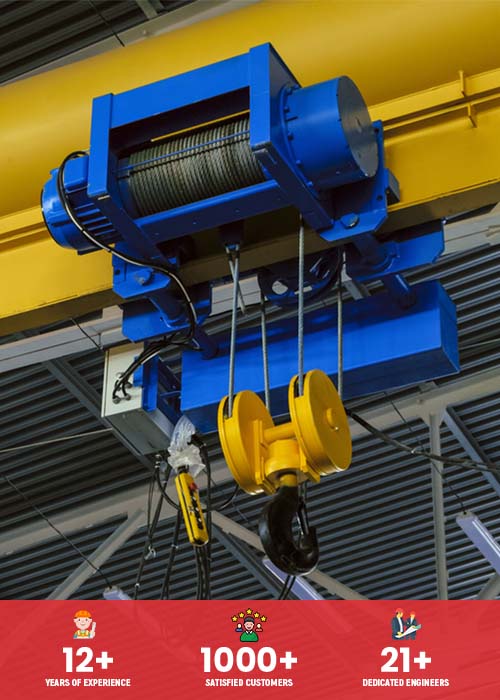Introduction to Jib cranes
A type of overhead lifting device that is commonly employed in smaller enterprises for specialised and repeated lifting duties is the Jib crane. All thanks to the jib crane manufacturers in India, these incredibly adaptable cranes can even be combined with overhead bridge cranes to boost output. Despite having a somewhat straightforward design, these cranes can lift up to 15 tonnes and 125 kg in some situations. They are attractive in a manufacturing setting because of their ergonomic design, which can increase worker productivity, reduce workplace injuries, and improve safety.
In this article, we will discuss the function and working of a jib crane, about its components as well as its types.
How do Jib cranes work?
This crane has a horizontal component that is frequently referred to as the boom or jib. An operational arm that projects horizontally from the crane is called a jib. The jib’s function is to provide support for a moveable hoist that is fastened to a floor-mounted pillar or wall. It is primarily used in industrial settings. Usually swinging in an arc, the jib is secured such that it allows for extra lateral movement. The jib, a tilted strut on the crane, serves as support for the fixed pulley lock.
In some cases, warehouse floors are equipped with cranes to assist in moving items from the ground to higher areas. There are cables directly on the load and multiple times around a set block on the load. The unconnected end of the cable is wound with a winding equipment or manually pulled.
The pulley system applies force to the load. As a result, the force exerted is increased by the length of wire that passes between two blocks. The mechanical advantage is the name of the product.
Components of a Jib crane

- The reach- The beam that moves back and forth on the tram is horizontal. Another name for it is the boom. The boom on mast jib and freestanding crane types can rotate up to 360 degrees. In contrast, the amount of spin on a wall- or column-mounted crane produces 180–200 degrees of rotation.
- Mast- This vertical beam, sometimes referred to as the pillar, serves as the boom’s support in mast- or freestanding-type systems.
- Hoist- This moveable component’s job is to raise, move, and reduce the loads.
- Trolley- Together with the hook on the boom, the trolley also holds the hoist, wires, wire rope and chains. The tram may move in three different ways: manually, mechanically, or pneumatically.
- Electric collector rings- Added to the top or bottom of the mast, these components are also referred to as pneumatic airlines. This component’s job is to help with rotation. It also permits the boom to rotate continuously in a 360-degree circle.
- Control Buttons- A push-button control system is used with motorised or air-powered jib devices. The trolley’s motion and the boom’s rotation are both assisted by the button controllers. The hoist’s raising and lowering operations are likewise managed by this controller. There are multi-speed control buttons on the trolleys and the hoist as well.
- Hook Height- This describes the lift’s maximum height or lowest point. The hook can go higher the lower the overhead obstruction.
- The rotation stop- This is the part of the crane that restricts how far it can move before running into neighbouring objects.
Types of Jib Cranes
Jib crane manufacturers in Ahmedabad make different types of jib cranes which are suitable for different purposes according to size, space and utilisation. There are basically 5 types of jib cranes which are
- Articulating
- Freestanding
- Foundationless
- Mast Type
- Well Mounted



